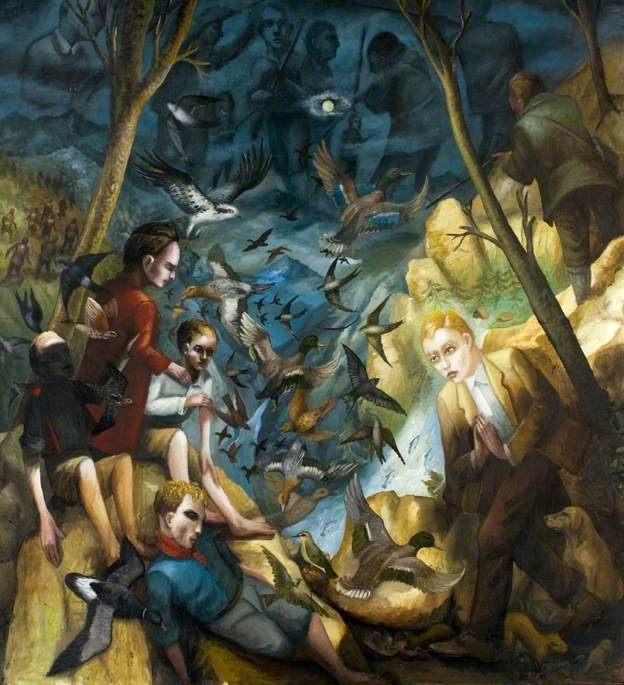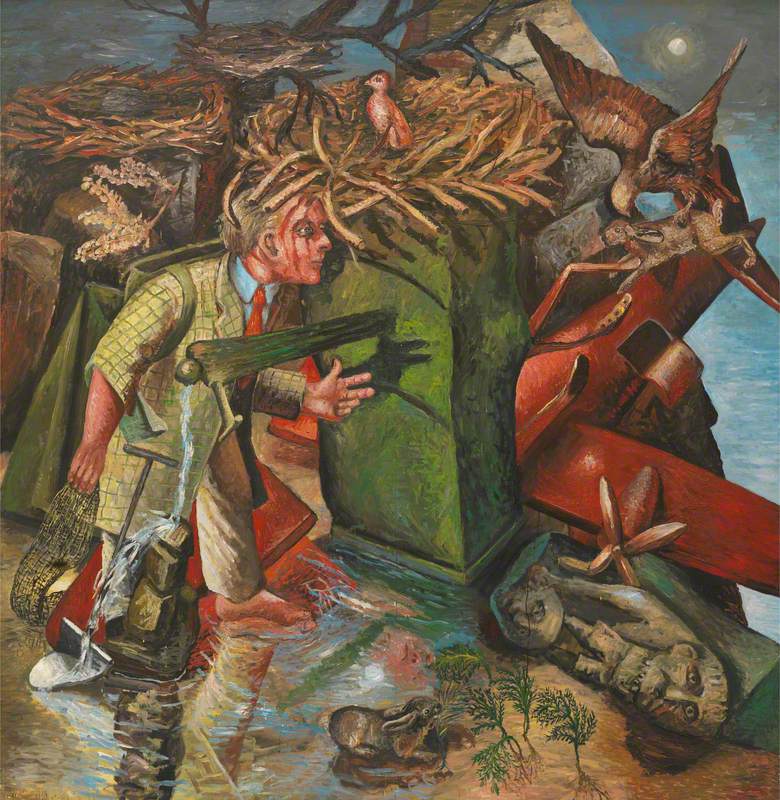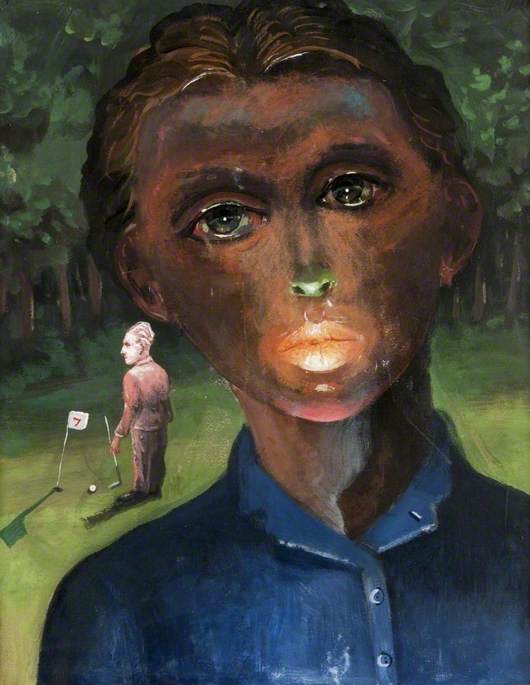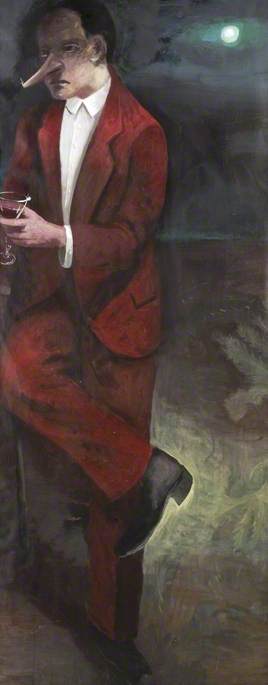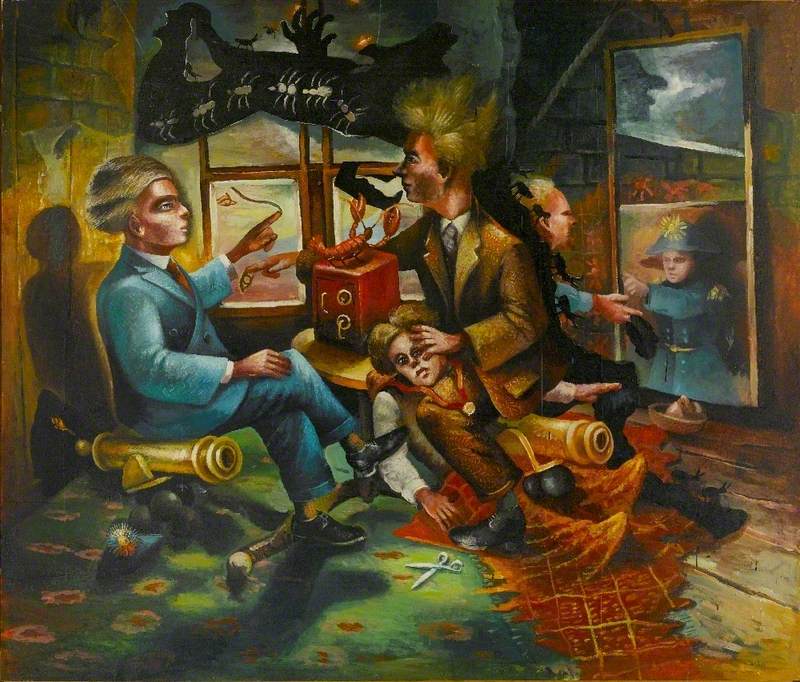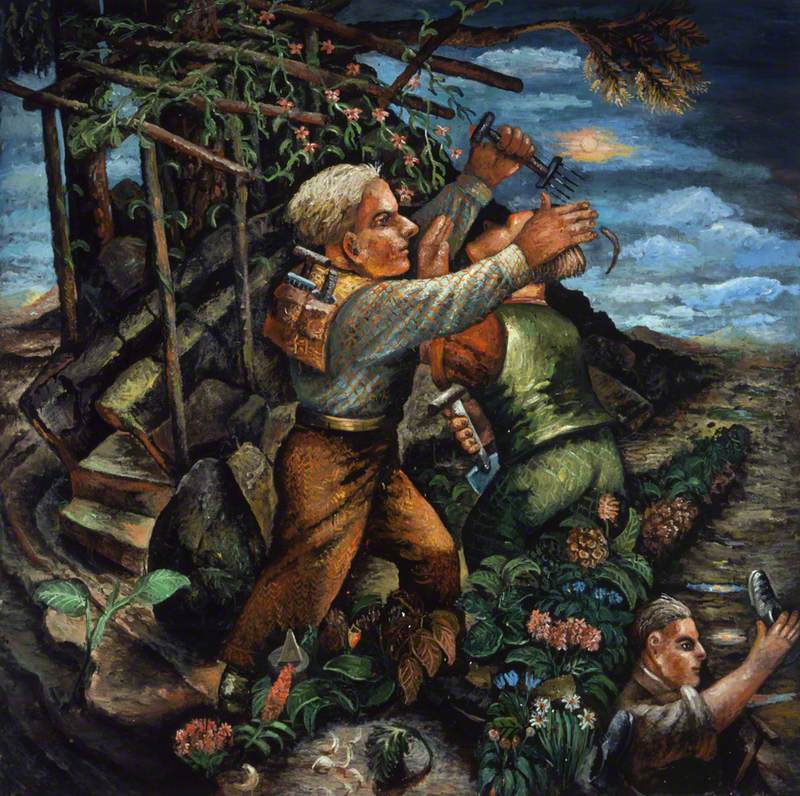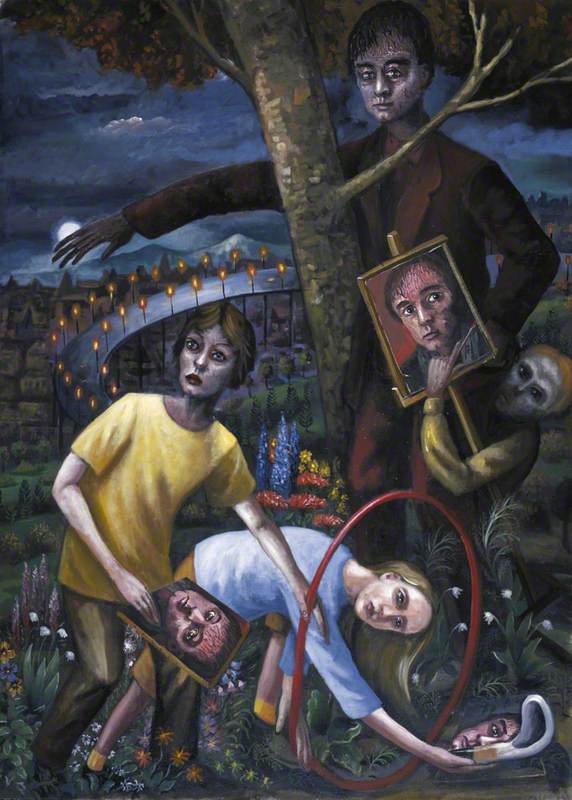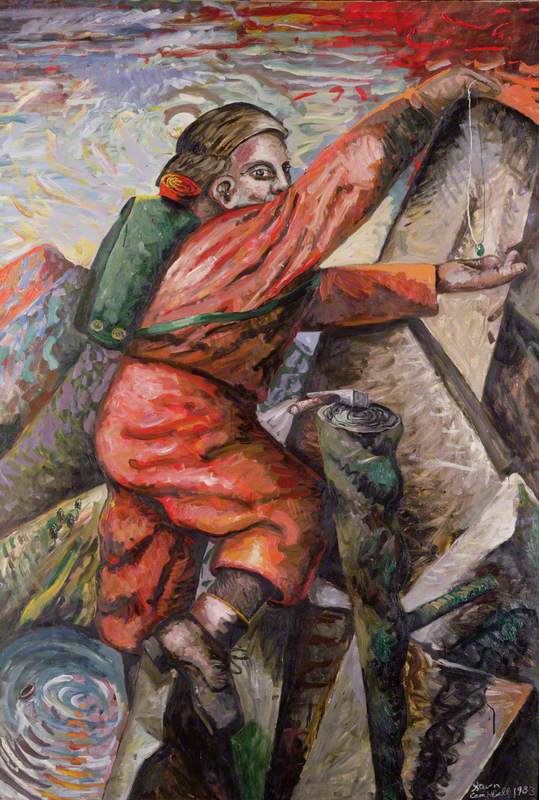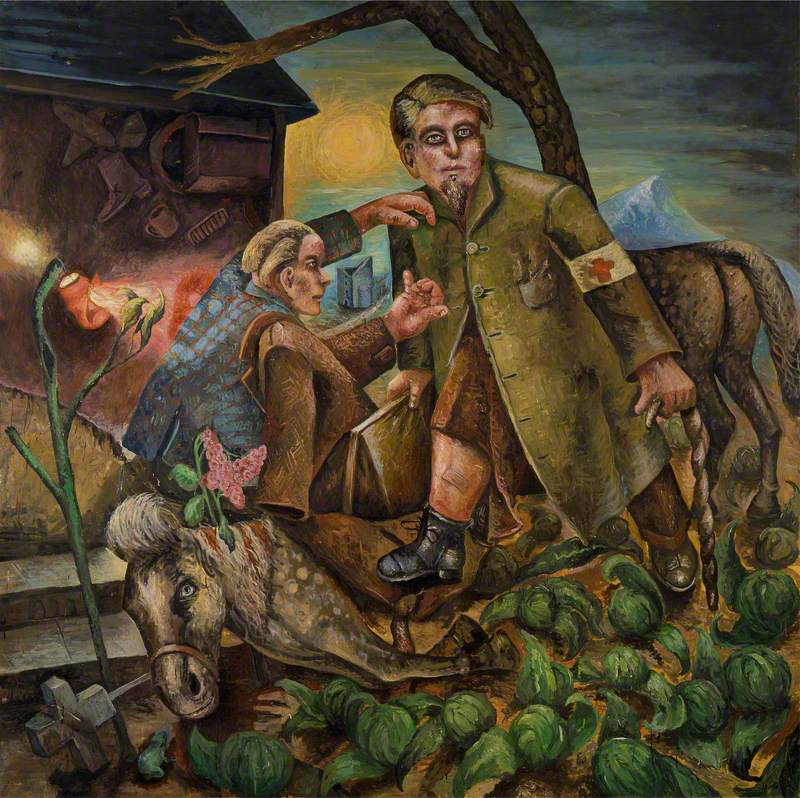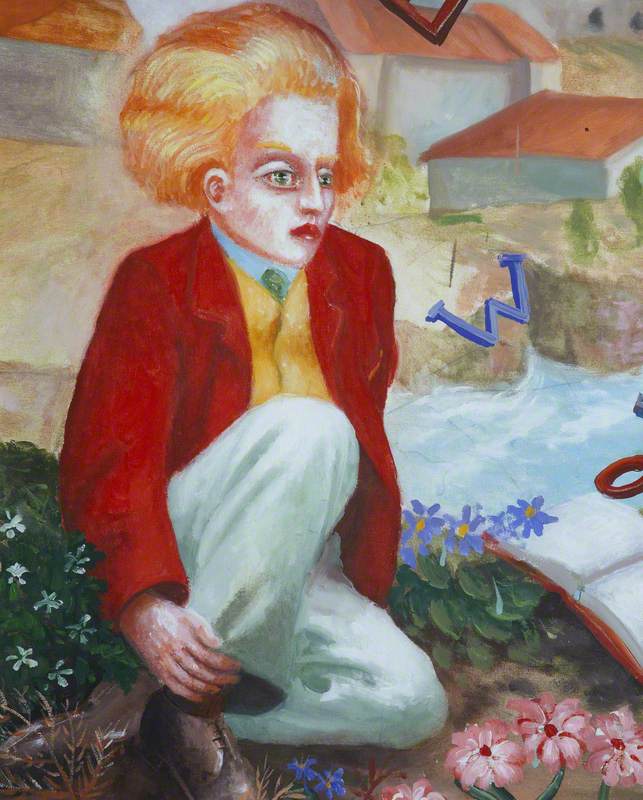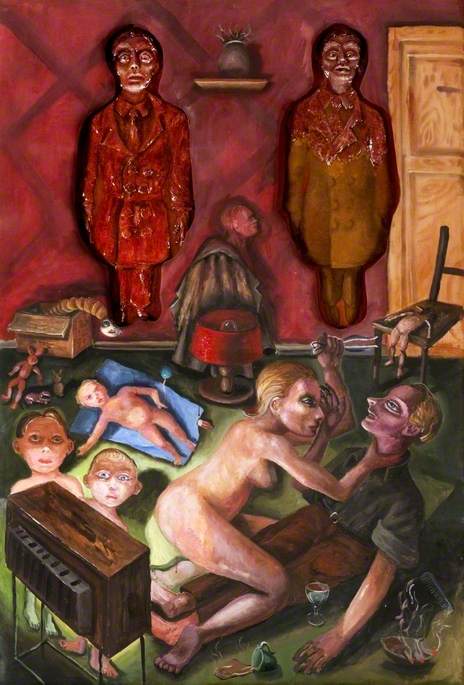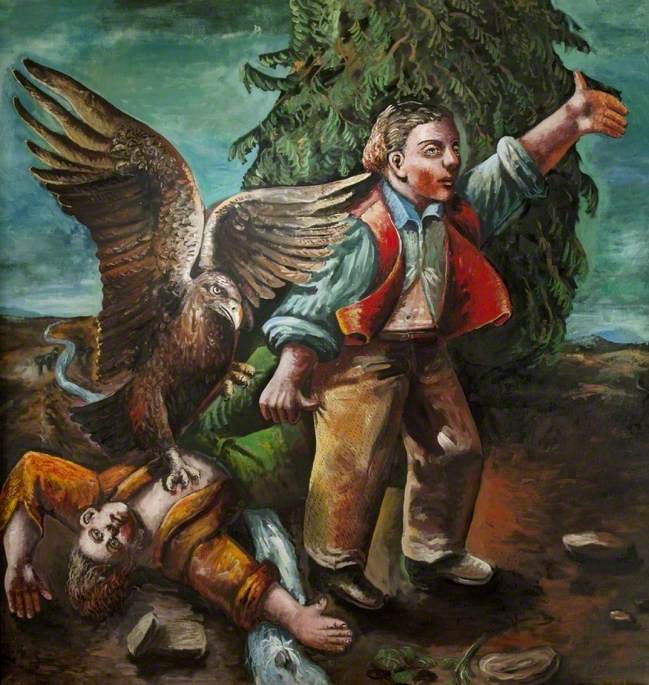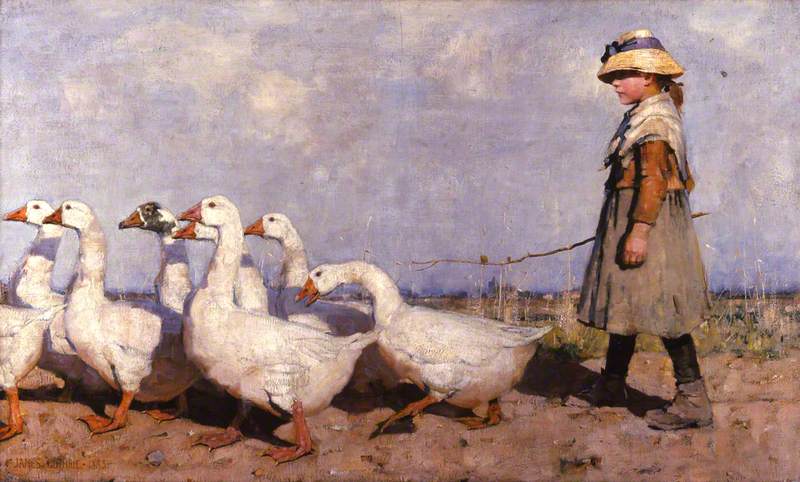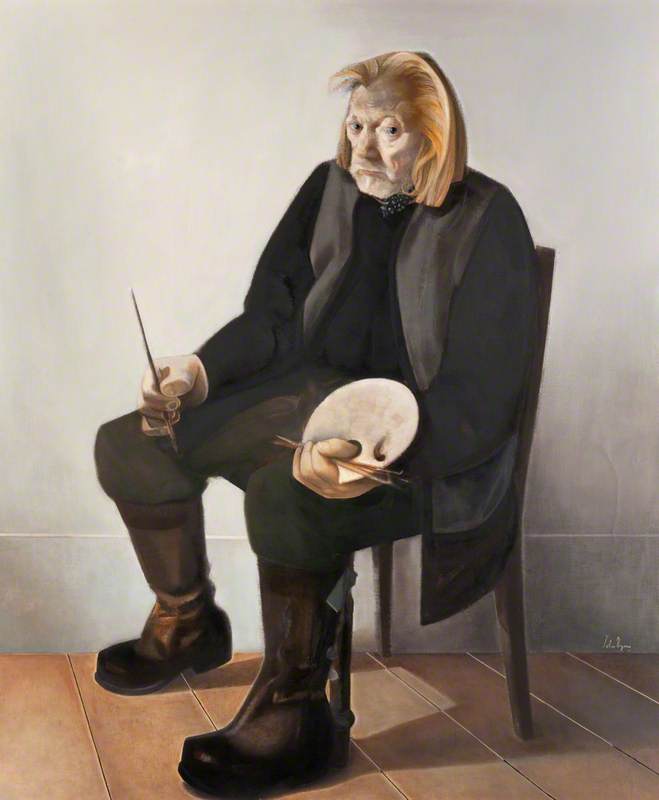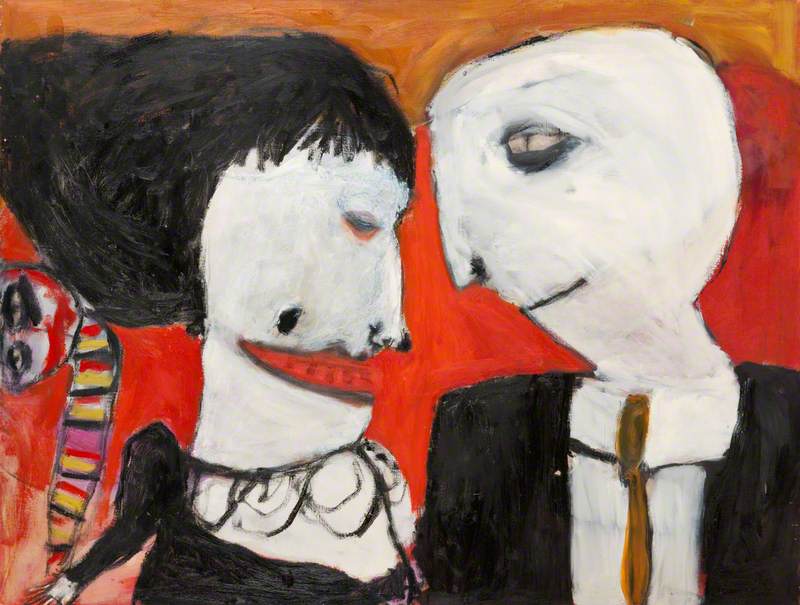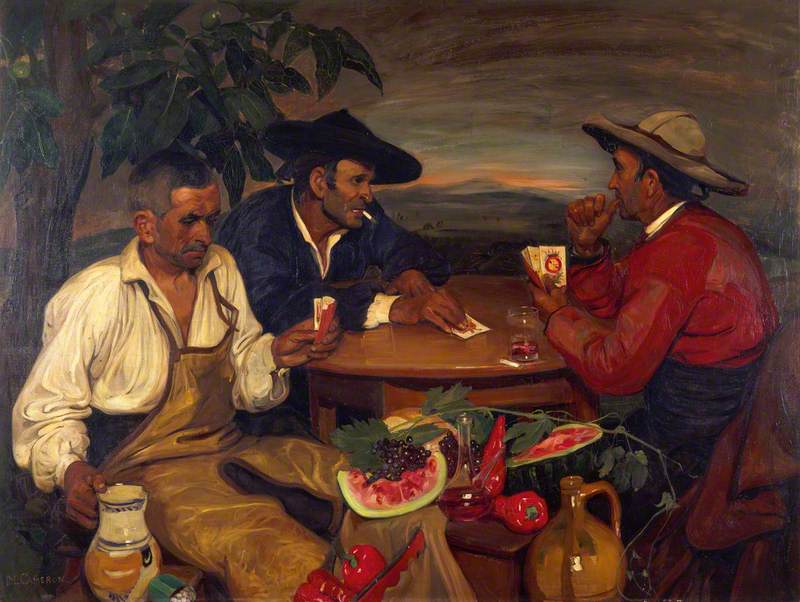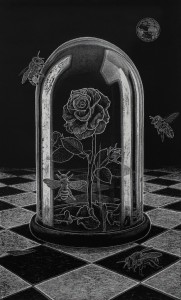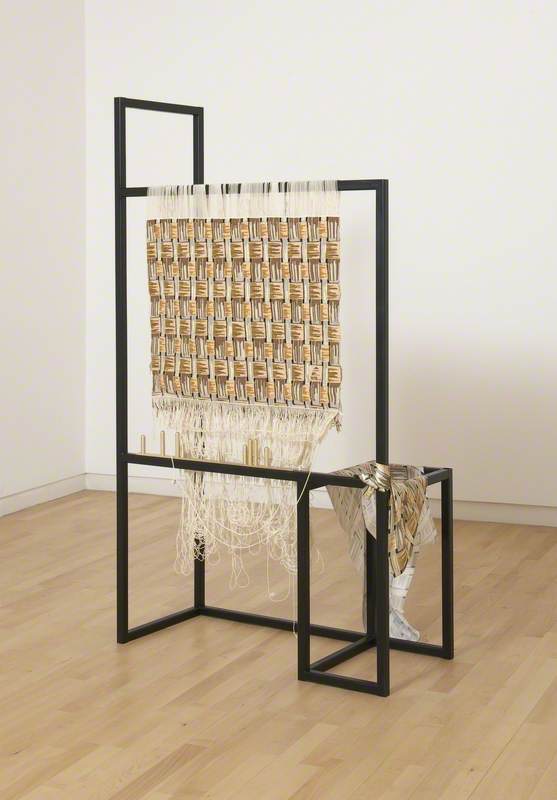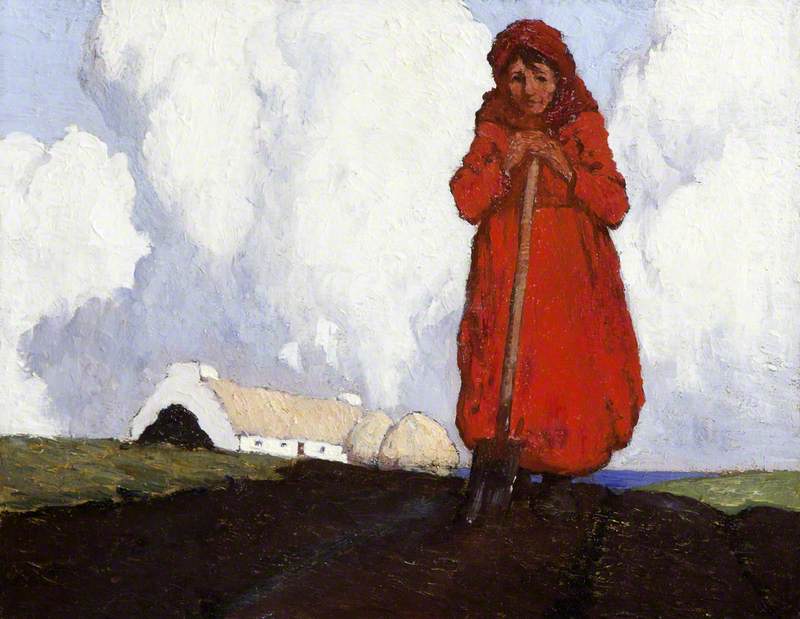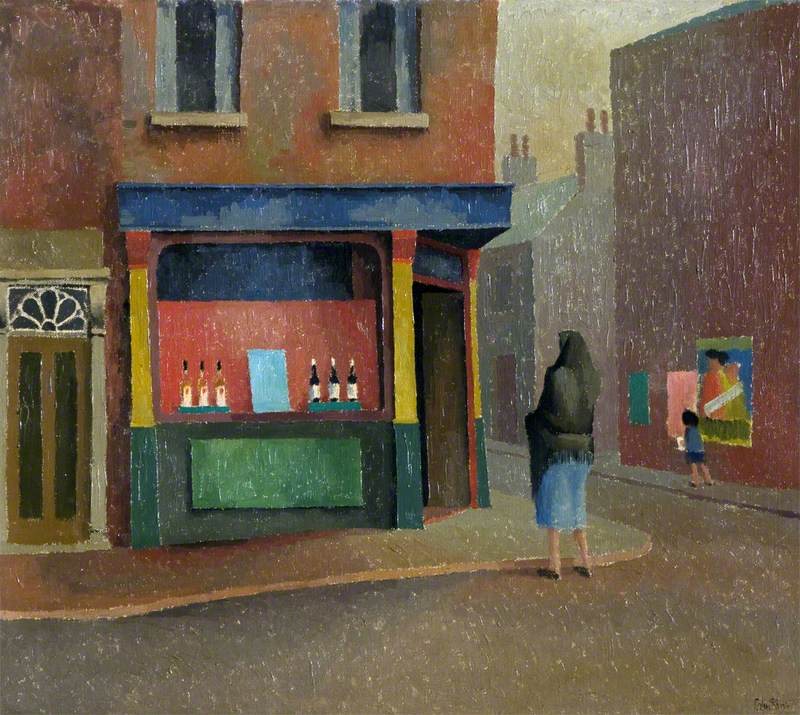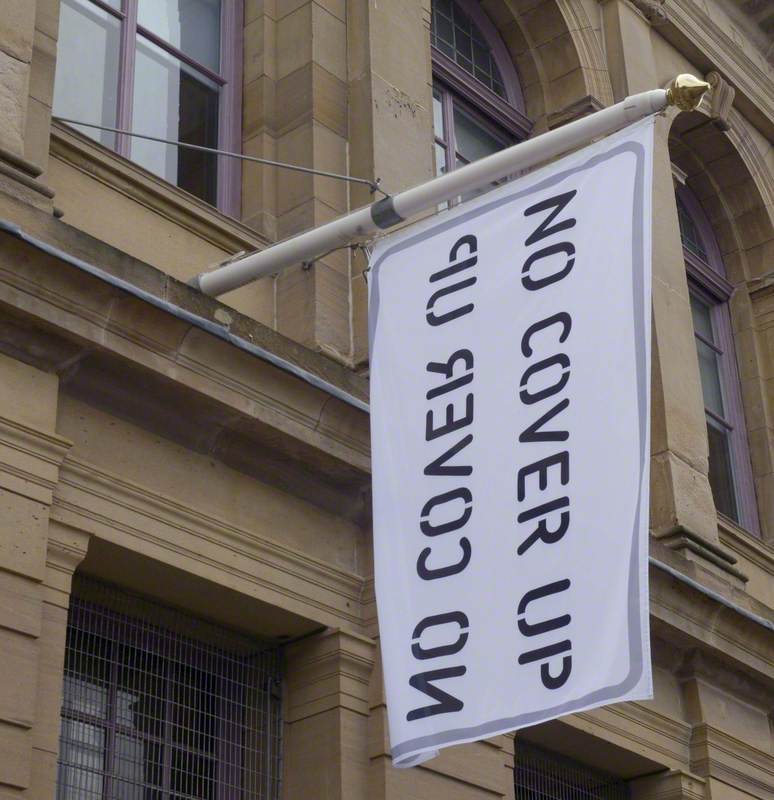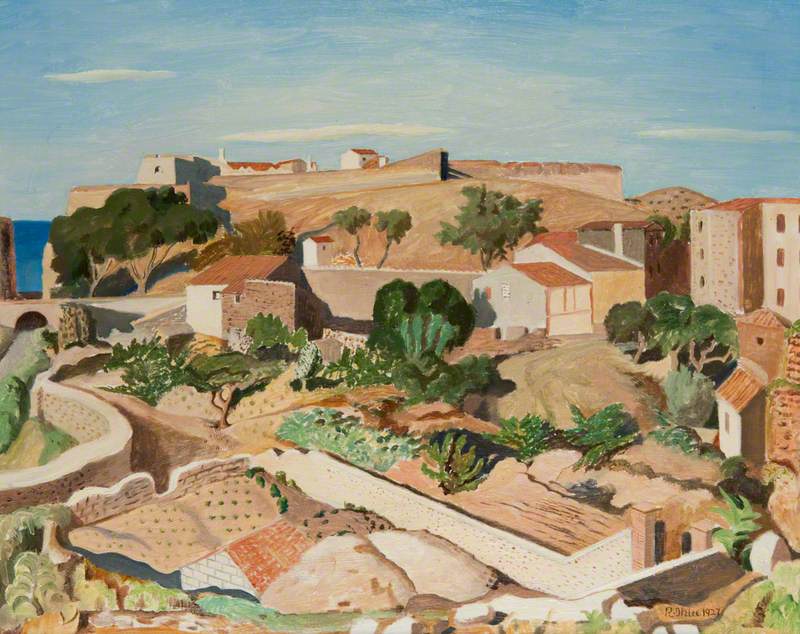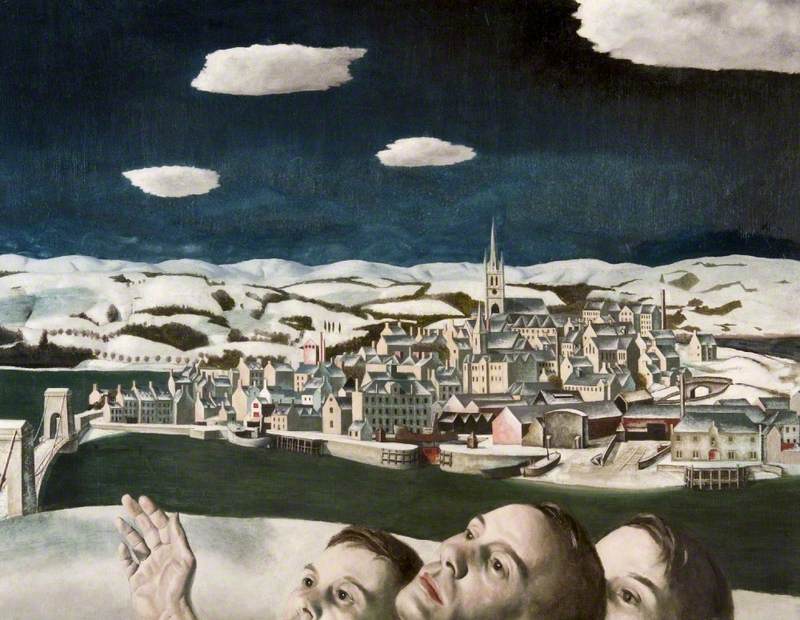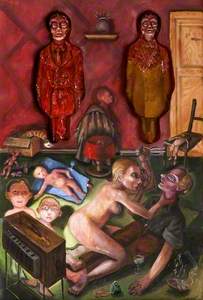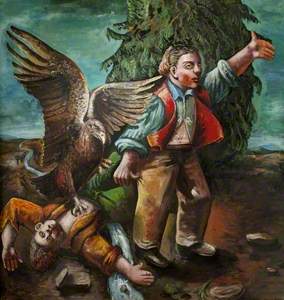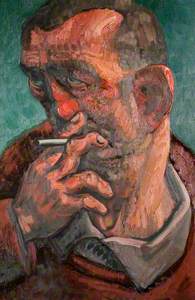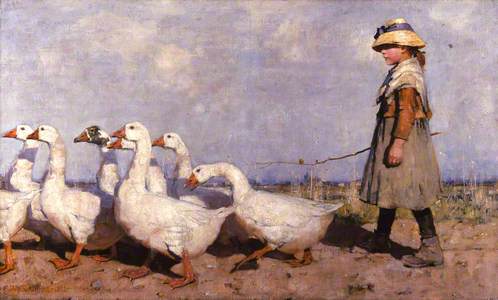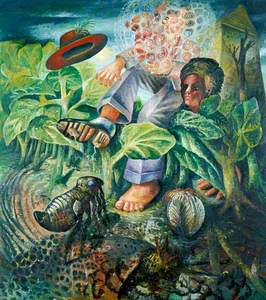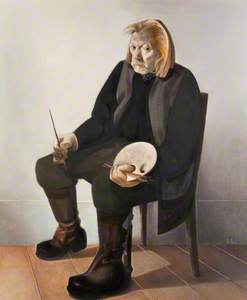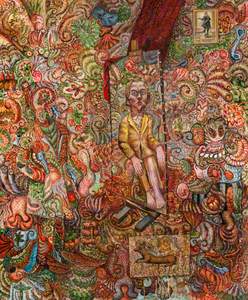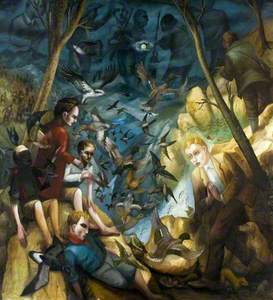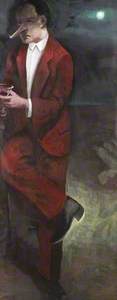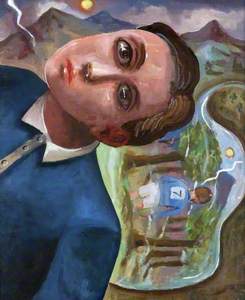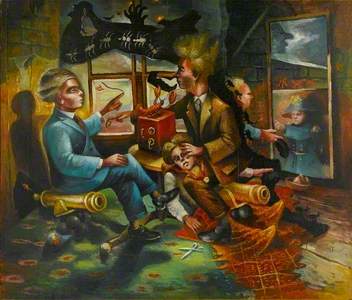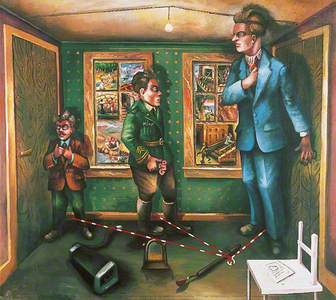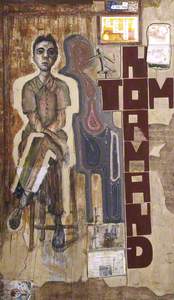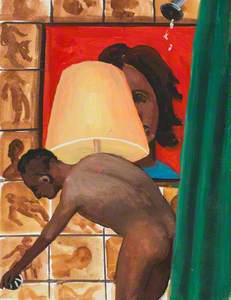When Steven Campbell died from a ruptured appendix at the age of just 54 in August 2007, the world was robbed of an artist at the peak of his powers; someone whose rigorous, fast-paced approach to creativity was absolute and uncompromising.
The former maintenance engineer for British Steel in Cambuslang entered Glasgow School of Art (GSA) in 1978 at the age of 25. He was from a working-class family in Rutherglen on the outskirts of Glasgow, and had left school at 16.
As a youngster, he was a voracious reader of existential writers such as Camus, Sartre and Beckett and, once at art school, he studied performance art closely while devoting himself to painting.
Blessed with a quicksilver intellect coupled with a soaring imagination, his paintings were mind-altering, mysterious and often surreal compositions with extravagantly literary titles. His vast hinterland of knowledge about art and artists, cinema, opera, literature, poetry and philosophy all fed into his art.
A look at the paintings by Steven Campbell on Art UK reveals esoteric titles such as The Light from the Grounds, Portrait of the Poet, The Emotional Detectives and The Golden City. At almost ten metres wide and 2.5 metres tall, the latter, pictured above, is Campbell's biggest painting.
The Golden City entered Paisley Museum's collection in December 2009 after hanging at Glasgow Airport's international departures for over a decade. Commissioned by HS Projects in 1996, it became a touchstone for thousands of passengers as they left Glasgow.
'The Golden City' by Steven Campbell at Glasgow Airport
In it, Campbell presents three views of the city: the Clyde estuary, a view from the countryside, and the scene from Glasgow University's tower.
In a statement held in his archive, he explained: 'The symbolism of the painting centres around the story of the emblem of Glasgow. It also takes account of St Mungo's stories, trying to give history a vision. I've aimed to get the balance between nature and the city; the Dear Green Place, idea. It's been tempting to add something dramatic, but it would have been the wrong thing to do for the location. It's not the place to be dark and moody.'
When it reopens in 2024, following a £45 million refurbishment, Campbell's romanticised version of his home city will be the single biggest painting on display at the refurbished Paisley Museum.
Our collection includes Steven Campbell's wonderful “Golden City” painting - its the museum's longest object. Commissioned by @H_Sprojects in 1996 for Glasgow Airport's departure lounge. Does anyone remember seeing it there. https://t.co/WjC3kvsP7D @SCampbellTrust @RenArtsMuseums pic.twitter.com/PeUfBiR99z
— Paisley Museum (@PaisleyMuseum) March 30, 2020
In many ways, this monumental symbolic work encapsulates the themes that obsessed Campbell during a 25-year career: nature, spirituality, family, pattern and a perennial quest for knowledge and meaning.
Campbell had a long-standing fascination with Giotto's frescoes of the life of Saint Francis, and took his family on annual visits to the Upper Church of the Basilica di San Francesco in Assisi, Italy. This ancient chapel contains 28 frescoes painted by Giotto between 1297 and 1300.
Giotto's frescoes depict events from Saint Francis' life of poverty and holiness, offering a guide for how Franciscan Friars should live their lives. Campbell incorporated stories around Saint Mungo, patron saint of Glasgow, into The Golden City.
Through a series of vignettes, Saint Mungo's story of the bird that never flew, the tree that never grew, the bell that never rang and the fish that never swam find their way to viewers' eyes. A woman holds the bird that never flew. There's a salmon representing the fish that never swam, while also leaping to catch the ring from the Saint Mungo legend. A man by a waterfall holds the bell that never rang, and on the other side of the waterfall is a stunted tree.
The Golden City
(detail), 1996, oil on canvas by Steven Campbell (1953–2007) 
According to Campbell, the waterfall was the Molendinar Burn, the starting point of the River Clyde, flowing through countryside to Glasgow's industrial heartland. In the bottom right-hand side, three large purple-chequered snake's-head fritillary bloom. This short-lived spring flower was used by one of Campbell's artistic heroes, Charles Rennie Mackintosh, in some of his most famous designs.
The Golden City
(detail), 1996, oil on canvas by Steven Campbell (1953–2007) 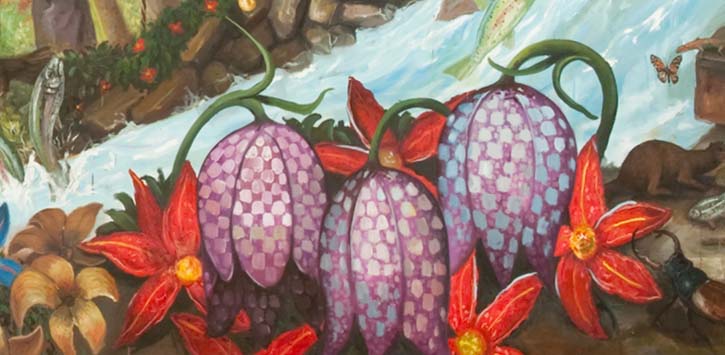
Campbell was a key figure in the revival of figurative painting that emerged from Glasgow School of Art in the 1980s. He is often referred to as being one of the New Glasgow Boys.
The term was coined in 1985 by a critic reviewing a travelling exhibition called 'New Image Glasgow', which featured the work of Campbell, together with younger GSA graduates – Peter Howson, Adrian Wiszniewski, Stephen Conroy and Ken Currie.
By 1985, however, Campbell had been living in New York for three years and had become the toast of the art world. He regarded the moniker as meaningless. The work of original Glasgow Boys, such as James Guthrie and John Lavery, who had lived a century earlier, was characterised by bold and vigorous brushwork and an emphasis on the decorative. The New Glasgow Boys came to be associated with a commitment to pushing the boundaries of figurative painting.
Campbell stands apart from the other New Glasgow Boys. He may have been a figurative painter, but there were elements of performance and conceptual art in all his work. In contrast to the work of the other three artists, Campbell's cast of characters and set pieces have more than a touch of theatre about them.
Campbell won a Fulbright scholarship to study at the Pratt Institute in New York following his graduation from GSA in 1982. For almost a year, he hid himself away in one of the school's studios, making and creating. Campbell always worked best when he worked quickly under the glare of an electric light.
Gesturing Hiker with a Furnace
1983
Steven Campbell (1953–2007) 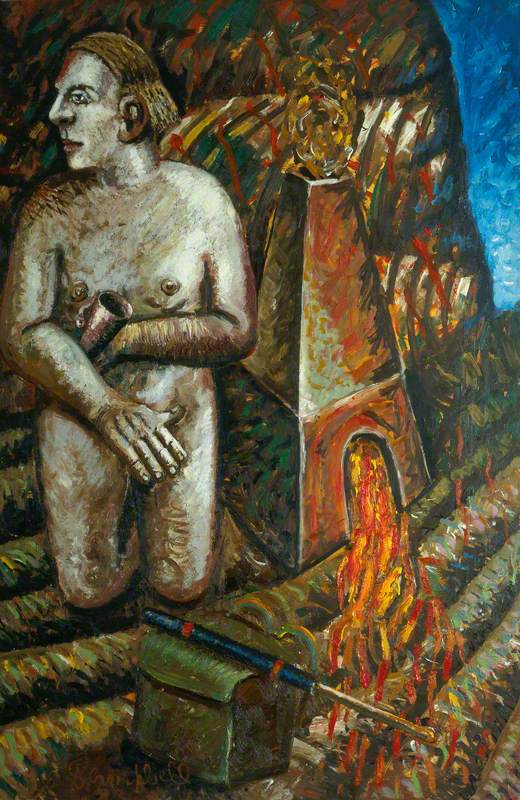
In the summer of 1983, influential gallery director Barbara Toll selected several works to be included in a group show. The paintings caught the eye of The New York Times' chief art critic, John Russell, who wrote about the young unknown Scottish artist in glowing terms.
Steel Moustache and the Axe
1982
Steven Campbell (1953–2007) 
Campbell's work began to be shown in major museums across the US and in Europe. The Hirshhorn in Washington (part of the Smithsonian) and the Art Institute of Chicago acquired paintings. He was signed to leading art dealers Marlborough Fine Art, who had a foot in both London and Manhattan.
The Fall of the House of Nook with Tree Blight
1984
Steven Campbell (1953–2007) 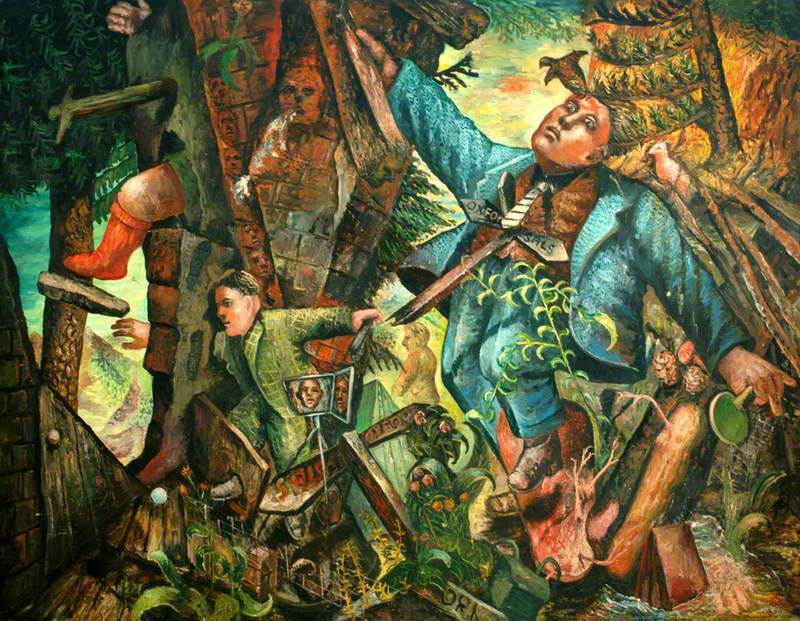
Throughout it all, creating a painting remained a conceptual act for Campbell. As did dressing. He once swapped a painting with the manager of New York's' Comme des Garçons store in exchange for $10,000 worth of credit.
From his early days at art school, he styled himself as a nineteenth-century romantic artist. With his leonine fair hair – the odd recalcitrant strand flopping over his eyes – and perfectly trimmed goatee beard, he was always beautifully attired in a well-cut suit. Or a long black leather Comme des Garçons coat and hat. Campbell-esque figures often found their way into his paintings.
Outside Right at the Sunset Gate
1994
Steven Campbell (1953–2007) 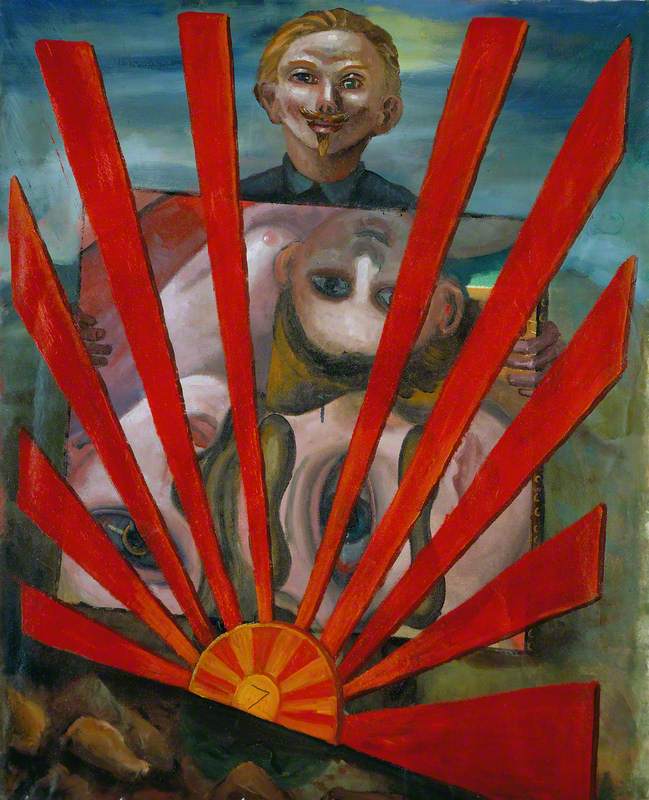
Campbell returned to Scotland with his family in 1987 and lived in Stirlingshire until his death in 2007. The first Scottish artist of his generation to be seriously collected in America, he paved the way for a generation of younger artists. His groundbreaking 1990 exhibition at Glasgow's Third Eye Centre (now the Centre for Contemporary Arts), 'On Form and Fiction', fused many of his ideas on art.
With benches borrowed from the nearby Kelvingrove Art Gallery and accompanying dramatic lighting, the walls of the museum-style room were crowded with sepia-ink drawings and 12 large acrylic paintings. An old tape recorder played on a loop.
Campbell's voice was heard one minute, the next, Serge Gainsbourg and Jane Birkin's steamy Je t'aime moi non plus rang out. The installation was recreated in 2014 at the National Galleries of Scotland for 'Generation: 25 Years of Contemporary Art in Scotland'.
Despite ill-health, Steven Campbell continued to paint, make and create works in oil, stucco, textiles and upholstery until the day he died. Life's rich tapestry confounded and inspired him to the end. In 2005, Campbell met and became friends with Scottish artist and writer John Byrne. Each duly created a portrait of the other.
Byrne's life-sized The Artist Steven Campbell depicts Campbell as a looming solitary figure in black, seated and clutching a palette and brushes. Campbell's portrait of Byrne, Paisleycus Byrnicus Virus Invading Mr Gray, is a riot of heavily textured reds, yellows, greens, russets, pinks and oranges with Byrne at the centre of a rich Paisley pattern – a nod to the older artist's birthplace. Both paintings are in the collection of Paisley Museum.
Waiting – Paisleycus Byrnicus Virus Invading Mr Gray
Steven Campbell (1953–2007) 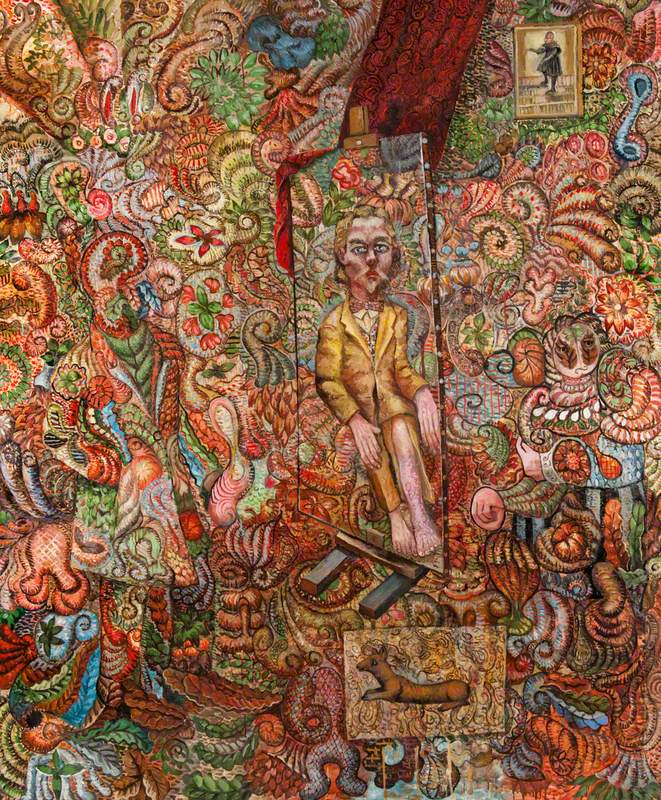
Steven Campbell viewed the world through the very particular prism of his inner world. Thoughts, ideas, philosophies, scavenged imagery, literary and filmic allusions all crowded into his mind and found an outlet on a stage of his own making. Strange and compelling, dazzling and dark, real and surreal, there is no other art like the art of Steven Campbell.
Jan Patience, journalist, broadcaster and author
This content was supported by Creative Scotland
